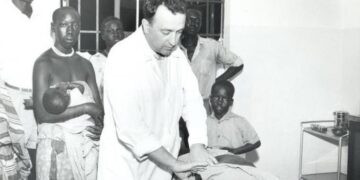By Michael Tumwesigye
Uganda has a rich and varied linguistic environment with over forty-three native languages in addition to English and Swahili. Since 2007, Uganda’s Ministry of Education and Sports has been implementing a policy of teaching in the child’s mother tongue in lower primary school classes up to primary three, at which point English is introduced as a language of instruction. It is well known that a strong mother tongue foundation equips children with the skills they need to learn additional languages, allowing them to transfer their understanding of the structure of language to several new languages.
According to research, developing the first language is more efficient because the skills and concepts can then be easily transferred to the second and may not have to be retaught. Moreover, the children end up with a stronger comprehension of the curriculum. In lower primary, instruction in the local tongue improves student performance and academic results. Children learn best when they start with simple concepts in their native tongue and work their way up to more complex ones. We learn better from known to unknown concepts. This method facilitates easier English comprehension in upper primary, beginning with Primary Four and progressively makes learning fun. Hence, Uganda’s thematic curriculum prioritizes instructing students in their mother tongue during the early years of primary education, recognizing the inherent advantage of enhanced learning in familiar languages. Nevertheless, this
approach has resulted in certain gaps, hindering children from fully developing a diverse set of competencies. China is often praised for successfully using Mandarin as a language of instruction. However, unlike Uganda, China invested in both Mandarin and English education. While this strategy worked in China for a large population, in Uganda, converting each of the 43 languages to a teaching language would be costly and may not bring much return on investment.
UNESCO states that it takes 12 years to fully master the first language. However, Uganda’s policy only allows 5-6 years before shifting to a second language, typically English. This, combined with the belief that English is superior, makes implementing mother tongue policies challenging, impacting overall learning. Although mother tongue use is encouraged by thematic curricula for primary schools, there are disparities in actual usage, which calls for careful consideration by the Ministry of Education, parents, and teachers.
Increased exposure to English is necessary, particularly in rural public schools where learners speak primarily their native tongue, which may impede their ability to speak the second language. In Uganda’s rural schools, primary four is when English is introduced to learners. Despite being introduced in 2007, mother tongue instruction is not as strictly enforced in urban schools because of the diversity of languages spoken. The discrepancies in private and public education exacerbate the issue. In public schools, English is primarily used in English lessons; in private schools, which are typically located in urban areas, all students are expected to speak English.
Additionally, private school pupils begin their English studies earlier than their counterparts in Universal Primary Education schools. Private school students start learning English at age 3-4, while government school students start at age 6. Children attending private schools in urban areas differ significantly from those attending public schools since most private schools have made English the official language of instruction. The disparity is showcased in terms of thinking, creativity and self-confidence when these children have to interact with a working world outside of school.
There are challenges associated with using the English language of instruction in upper classes in primary schools, especially in rural Uganda. Teachers’ and students’ poor English language proficiency poses more challenges to language acquisition. Education faces difficulties due to teacher proficiency issues, limited exposure to English resources, and unrealistic timelines for language acquisition in environments with limited resources. Individuals who received their education in rural schools often grapple with self-esteem issues, which persist into adulthood, particularly, evident when expressing themselves in English. Teaching second languages to young children slows down their language development, which can present educational challenges and limits the number of words a child can learn in a given amount of time. It can lead to misunderstandings and impede a child’s ability to master a second language besides, it may contribute to cultural confusion.
For instance, in schools in the Central region of Uganda, cultural norms dictate that a girl child should kneel when greeting an elder in the Luganda language, whereas no such gesture is required when greeting in English. Children may become confused by phonetics, phonology and morphology when two languages are used for instruction. For instance, despite sounding similar to English vowels, some Bantu-speaking languages have more than five vowels in their written
language.
A child who is only beginning to recognise the various vowels and sounds could become easily confused by this. To sum up, an inclusive and comprehensive strategy is needed to manage the complexities of Uganda’s language education laws. It is crucial to strike a balance between the advantages of mother tongue education and the real-world difficulties presented by linguistic diversity, resource constraints, and differences between urban and rural environments.
Uganda can guarantee the successful development and academic accomplishment of its young minds by creating an atmosphere that celebrates linguistic diversity, and modifying education policies to fit the particular needs of each community
















